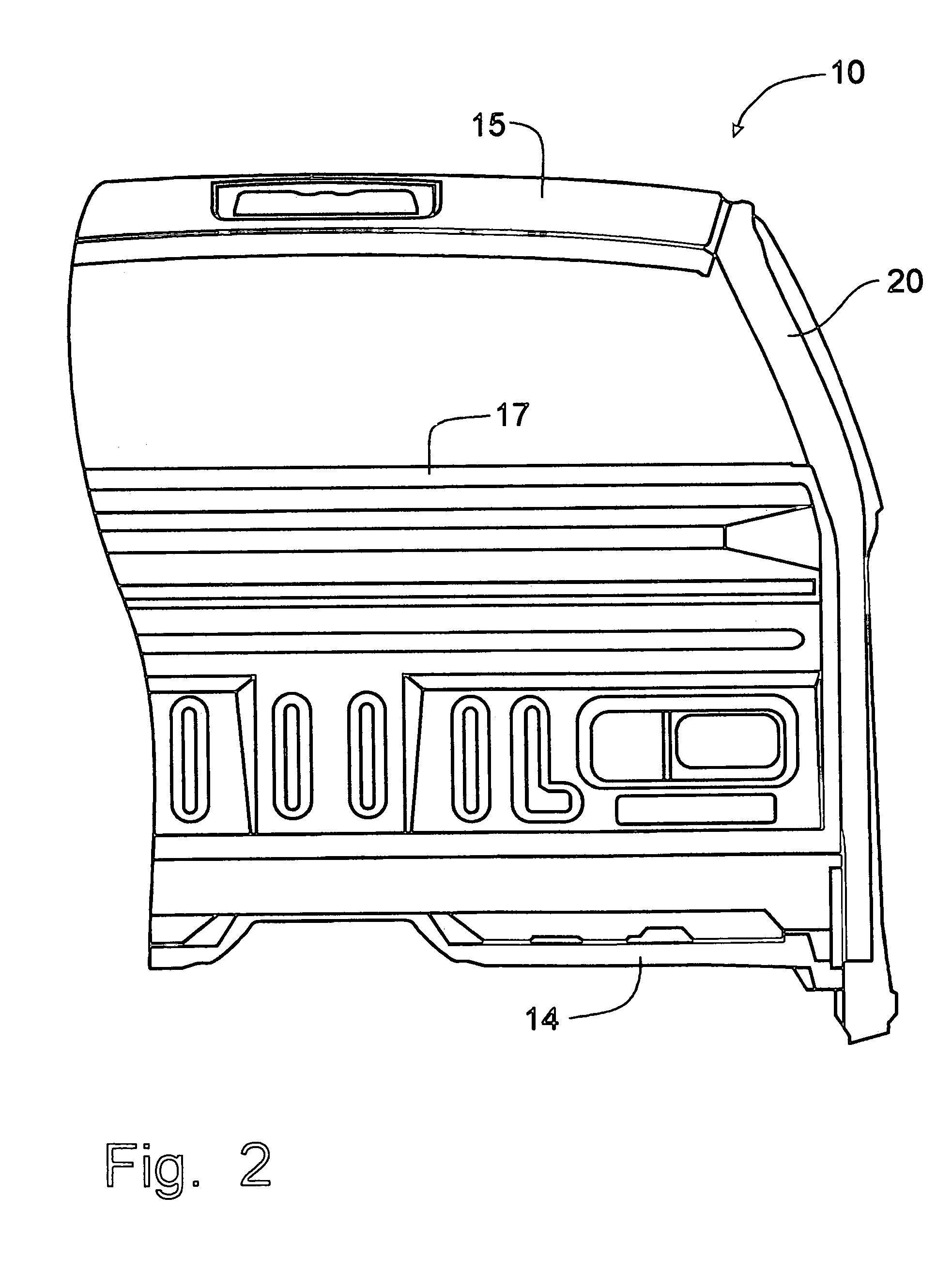Dual cell rear corner pillar for automobiles
a rear corner pillar and dual cell technology, applied in the field of rear pillar configuration, can solve the problems of increasing the longitudinal length of the roof, increasing the unsupported span over which load must be transferred, and reinforcing the rear pillar, so as to achieve the effect of reducing the number of structural pieces, and being durable in construction
- Summary
- Abstract
- Description
- Claims
- Application Information
AI Technical Summary
Benefits of technology
Problems solved by technology
Method used
Image
Examples
Embodiment Construction
[0029]Referring to FIGS. 15, a frame for the operator's cab of a pick-up truck can be seen. The frame 10 of the operator's cab includes a rear corner pillar structure that incorporates the principles of the instant invention. Any left and right references are used as a matter of convenience and are determined by standing at the rear of the operator's cab and facing the normal direction of travel of the pick-up truck. The frame 10 of the operator's cab is formed with a generally vertical front (or “A”) pillar 12 extending between the floor member 14 and the roof 15. A rear pillar 20 completes the generally rectangular configuration of the frame 10 and is intended to encompass both front and rear doors (not shown). The front door will hinge on the front “A”pillar 12, while the rear “B”pillar will support the hinges for the rear door. A back panel 17, as well as the roof member 15, extends from one side of the vehicle frame 10 to the other, spanning between the transversely spaced rear...
PUM
 Login to View More
Login to View More Abstract
Description
Claims
Application Information
 Login to View More
Login to View More - R&D
- Intellectual Property
- Life Sciences
- Materials
- Tech Scout
- Unparalleled Data Quality
- Higher Quality Content
- 60% Fewer Hallucinations
Browse by: Latest US Patents, China's latest patents, Technical Efficacy Thesaurus, Application Domain, Technology Topic, Popular Technical Reports.
© 2025 PatSnap. All rights reserved.Legal|Privacy policy|Modern Slavery Act Transparency Statement|Sitemap|About US| Contact US: help@patsnap.com



